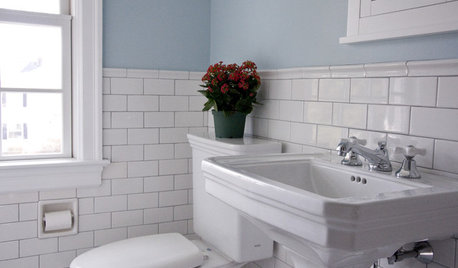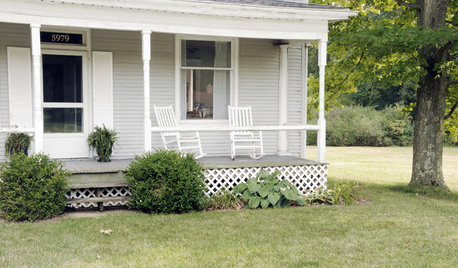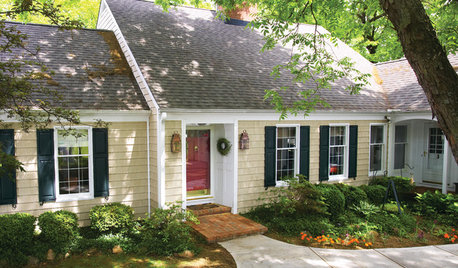Leak at meter on the house side.
tony41
11 years ago
Related Stories

BATHROOM DESIGNRoom of the Day: Renovation Retains a 1920s Bath’s Vintage Charm
A ceiling leak spurs this family to stop patching and go for the gut
Full Story
REMODELING GUIDESFiber Cement Siding Takes a Front Seat
Not just a wood or vinyl substitute, fiber cement is a stellar siding choice in its own right for modern home exteriors
Full Story
APARTMENTSMy Houzz: Florist’s Home on the Sunny Side
An Australian crafter, thrifter and professional floral designer shows off her quirky style
Full Story
KITCHEN DESIGNKitchen of the Week: Industrial Design’s Softer Side
Dark gray cabinets and stainless steel mix with warm oak accents in a bright, family-friendly London kitchen
Full Story
DECORATING GUIDESShow Your Resourceful Side With Vintage Coastal Style
Reused pieces anchor this soothing, casual design style, rounded out with soft fabrics and weathered materials
Full Story
LIFE9 Ways to Appreciate Your House Just as It Is
Look on the bright side — or that soothingly dark corner — to feel genuine gratitude for all the comforts of your home
Full Story
REMODELING GUIDESGive Me a Wall, a Roof, or a House of Glass
Swoon over spaces warmed by sunlight — from one side, or many
Full Story
HOUZZ TOURSMy Houzz: A Reclaimed Wood House Rises From the Trees
Scorched siding, thoughtfully repurposed furnishings and a connection to both family and nature shine in this designer's new build
Full Story
HOUSEKEEPINGHow to Wash Your House
Avoid damage to siding and plants while getting your home's exterior shining clean, with this guide to using pressure washers and hoses
Full Story
CONTEMPORARY HOMESHouzz Tour: A Creative Renovation Says Hello
A bland brick expanse at the street side of a corner house has become a very cool local landmark. All it took was a simple thought
Full StoryMore Discussions







lazypup
tony41Original Author
Related Professionals
Livingston Handyman · Beach Park Kitchen & Bathroom Remodelers · Bay Shore Kitchen & Bathroom Remodelers · Citrus Park Kitchen & Bathroom Remodelers · Avondale Kitchen & Bathroom Remodelers · Charlottesville Kitchen & Bathroom Remodelers · Elk Grove Village Kitchen & Bathroom Remodelers · Lisle Kitchen & Bathroom Remodelers · Pasadena Kitchen & Bathroom Remodelers · Rochester Kitchen & Bathroom Remodelers · Saint Augustine Kitchen & Bathroom Remodelers · Southampton Kitchen & Bathroom Remodelers · Toledo Kitchen & Bathroom Remodelers · Trenton Kitchen & Bathroom Remodelers · Cave Spring Kitchen & Bathroom Remodelerstony41Original Author
brickeyee
lazypup
tony41Original Author